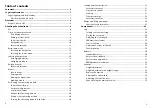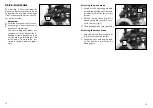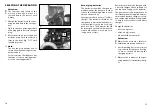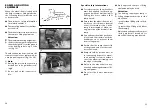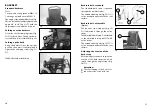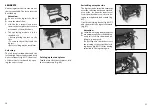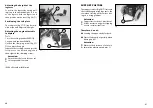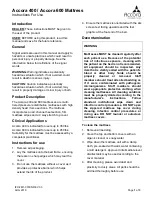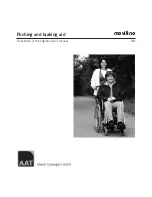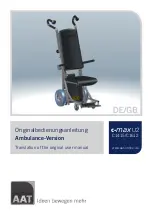
21
20
LOADING AND TRANSPOR-
TATION
Safety informations
For the transport in vehicles, you must
leave the wheelchair and sit in a suit-
able seat in the vehicle. – The wheel-
chair is not designed to withstand the
forces which are generated in acci-
dents, which exposes the user to con-
siderable risks.
Transport in vehicles
The following items may be necessary
due to lack of space for the transport
in vehicles.
▲
Remove the legrests.
▲
Remove the operating module.
▲
Remove the armrest units.
▲
Folding over the backrest (fig. 15).
The parts detached for the transport
must be carefully stowed and careful-
ly attached again before the next jour-
ney!
!
Attention:
Do not use the wheelchair without
attached legrests and armrest units!
15
Remove the operating module
To remove the control unit, slacken the
clamping screw (fig. 13/
➀
). Pull the
operating module to the front.
☞
Note:
☞
Carefully route the cable when
doing this.
Fitting of the operating module
Insert the operating module into its
clamping device. Tighten the clamp-
ing screw (fig. 13/
➀
).
Carefully route the cable when doing
this.
Turning the operating module
to the side
With the optional swivel away oper-
ating module adapter the operating
module can be swivelled away to the
side so that it is located parallel to the
armrest (fig. 14). This makes it possi-
ble, for example:
– to drive closer to a table.
– Remove the operating module
more easily.
For normal driving, swivel the oper-
ating module forward again over the
pressure point until it latches into
place.
13
14
1
Loading
The wheelchair can be loaded with the
aid of ramps or lifting platforms.
☞
Note:
Observe the chapter <
Ramps and
lifting equipment
>.


